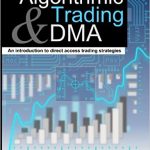The ability of the trading professionals to judge the overall situation and details of the market is far from comparable. Before the trading, he will pay attention to the following aspects of the market and clearly give the answer:
(1) Is the current market environment suitable for operation? Is there a trend in the market? If there is no trend, what kind of form is the market likely to be building? Is it a bottom reversal pattern, a top reversal pattern, a trend relay pattern, or a temporary disorientation to be observed? Where is the important support or barrier level?
(2) If there is a trend, what level is the trend? Is the bull market or a bear market? Early, mid or late in a bull or bear market? If it is a secondary reentry trend, which position has it retreated to the length of the previous trend? 33%, 50% or 66%? What is the status of the daily, weekly and monthly chart? What is the relationship between market long-term, middle-term and short-term trends?
(3) Is there a symbolic K-line, resonance, anti-vibration, over-head signal on the daily, weekly, and monthly K line graphs? If so, what kind of market is indicated? Are there any important technical phenomena such as gaps, single-day/single-week/single-month reversal, over-ups, over-slipping?
(4) Is the market in a normal state of advancement or an extreme state? Does the volume (position) verify the price change?
This is the overall situation, that is, the overall judgment of the trader on the macro and micro position of the market, the long-term and short-term direction of the market. Traders derive from this judgment the long-term and short-term bullish or bearish conclusions of the market and act accordingly. Normally, professional traders only enter the market when the market’s long-term and short-term movements are in the same direction. If the market is not consistent in the long-term and short-term direction, he will either not trade or engage in short-term trading. Before actually entering the game, he will also clarify the following questions:
(1) How will the market evolve the most from week to month?
(2) If you decide to wait and see, how long does it take to wait and see? If you decide to enter the market, the amount of position that you will hold for buying-long or selling-short?
(3) At what exact point that you want to jump in? Where is the profit target?
(4) What kind of trading system are used to enter the market? Where is the protective stop loss order placed?
(5) If I make a mistake, how much risk do I intend to take?
This is the detail view, the ability of traders to actually deal with the various new situations and challenges that your trading position is constantly facing. The overall situation understanding is in the scope of trading technology, and the details are in the scope of trading strategies. The overall situation focuses on “knowing” and the detail view focuses on “doing”. Successful trading are inseparable from the integration of macro and micro judgments, and the unity of knowledge and action.
We refer to the trader’s view of the overall market structure and long-term trend as macro judgment, and the view of the detailed position and short-term trend of the market is called micro-judgment, and the two are collectively called the overall situation understanding. From the point of view of actual combat needs, this two cannot be neglected in any one of them, otherwise they will not be considered to have a good overall situation understanding. In general, non- margin trading rely more on correct macro judgments, while margin trading relies more on correct micro-judgment. Traders who are better micro than macro are able to self-insure in margin trading and earn more money than in non-margin trading, but a common feature is that it is difficult to make big money in only one aspect; Traders who are macroscopic and not good at the micro level are able to make big money in non-margin market, but they will make huge losses in margin trading. Because of the nature of the leverage and the character that is often unwilling to stop loss, they will die in the latest darkness of pre-dawn because they can’t wait for the market to prove their judgement correct. Therefore, for individual traders, it is impossible to engage in margin trading without understanding micro-level of the market.
Since a trader lacks a high-accuracy macro-judgment or can’t hold on to their judgment, they will not be able to make big money, so to some extent they must trust their own macro judgment. Because of this, macro judgments can easily become a stubborn preconception. If the position is in trouble, it may be wise to put aside your overall judgment and long-term view of the market. It may be imperative to close position or lower the position in time so that it does not interfere with the overall security of the fund. To know that all the big trends are starting from the small trend, you must know the truth of “the embankment of a thousand miles, collapsed in the ant hole”! Although it is unpleasant to admit mistakes, sometimes it is necessary for us to ask ourselves: “Is it really wrong? Even if it is only temporarily wrong, can I afford the loss caused by continuing to maintain the position?” There are contradictions within the overall situation, that is, the contradiction between the macro and micro trends of the market; there is also a contradiction between the overall view and the detail view, that is, the contradiction between “view” and “fact”. The stop loss is to admit mistakes, and the timely stop loss is to admit mistakes at the least cost.





